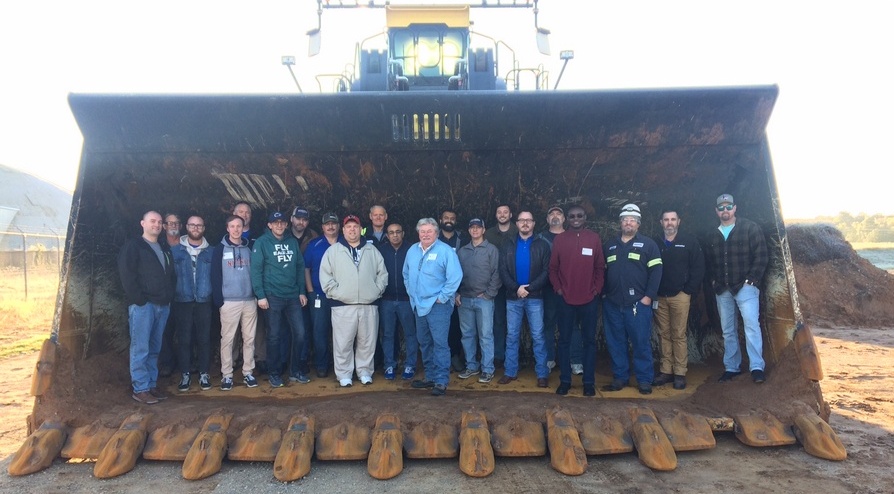We recently wrapped up another Maintenance Miracle Autonomous Maintenance Kaizen Event, this one was hosted by Komatsu Mining Corporation. Ellis New, Senior Management Consultant and TPM Zealot with Productivity Inc. facilitated the event. Afterwards, we chatted with Ellis about OEE and the AM session’s impact on the participants.
First, a quick refresher on OEE: OEE is a preferred measure of equipment effectiveness. Its formula is availability x performance x quality rate x 100. An OEE of 85% or higher is considered world class.
In talking with Ellis, he emphasizes that the OEE calculation itself is just a number; it assigns a numerical value to help direct us to where change is needed. What really matters, Ellis contends, are the inputs into the OEE calculation (production data, including hours per shift, total break time, machine downtime, planned run rate, total units manufactured, reject/rework pieces). That’s where the real opportunity lies. To fully understand the situation – the issues creating the major losses – you have to break down the inputs. Then real improvement can happen.
Ellis also emphasizes that OEE should be measured on constraint and bottleneck equipment. Equipment that is highly visible, will make an impact to the performance or flow once improvements are made.
During the AM event, participants helped improve OEE on pilot equipment by addressing the 6 major losses. Alternating between the classroom and the Gemba, participants worked along-side Komatsu associates learning and applying the steps of AM. Following a clean/inspect/detect/correct/perfect formula, participants worked to restore equipment basic conditions, control/eliminate sources of contamination and remove inaccessible areas to make it easier for ongoing maintenance efforts. As part of the process, the team generated provisional clean/inspect/lubricate standards, and created one-point lessons to aid operators in continued equipment care. As the week’s activities progressed, measurable improvement in the machine’s OEE became evident.
Event attendees shared a few of their key takeaways from the session:
- TPM is a data driven process involving all employees, not just maintenance.
- Equipment maintenance is not fixing and repairing; it’s maintaining equipment that’s already been restored to its optimal working condition, then keeping it there through daily AM activities
- Conducting initial cleaning and inspection, and eliminating contamination and inaccessible areas helps address the 6 major losses, thereby improving equipment efficiencies, uptime, quality, and capacity
- TPM can transform operators into process owners… with a better understanding of their equipment they can better manage and execute their processes…through the creation of one point lessons, checklists and provisional standards
- Education, leadership/company buy-in, culture change, and safety are all critical to a successful TPM implementation
- Mindsets needs to change from a “run to failure” model (which is 12x more costly in the long run), to one of repair, restore, maintain, and improve
Robert C, Maintenance Manager at the plant added, “This is one of several Maintenance Miracle sessions we’ve hosted…all have been great. We look at the equipment every day; this event allows us to look at things with fresh eyes based on the questions others (outside participants) asked with a new perspective. We uncovered many opportunities for improvement.”
Our thanks again to the Komatsu team for their hospitality during the training event. The photo above is of the entire Maintenance Miracle implementation team with Ellis, who is front row center in the light blue shirt. The team is standing in one of the Komatsu machines. During the event, the team interfaced with some of the largest mining/excavation equipment in the world.
Interested in more tips on TPM and CI? Check out the Lean and TPM Tips page on our web site. Give us a call if we can help with any of your TPM and CI initiatives, from certification to on-site training and consulting.
